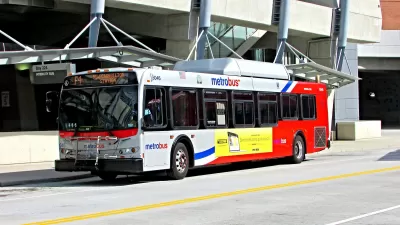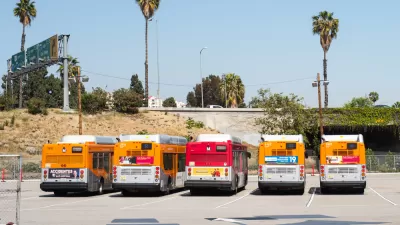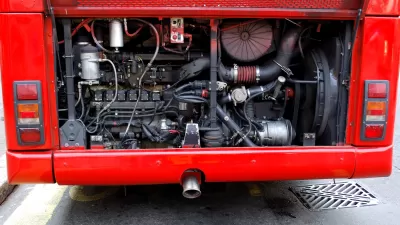New survey findings identify transit priorities among residents in D.C. and surrounding areas, and indicate broad support for public investments.

The Washington Area Bus Transformation Project surveyed almost 3,000 residents about their transit priorities. "Across age, racial backgrounds, and between regular riders and non-regular riders, respondents consistently chose bus lanes or free transfers as their number one priority, and the other one second in almost all cases," reports David Alpert.
The focus on bus lanes is consistent with a Washington Post poll that shows strong support from a majority of Washington-area and D.C. residents. The strong desire for free transfers also makes sense, says Alpert. "Among transit agencies that operate both bus and rail, the majority let people transfer between the two for free. WMATA has the most punitive structure for bus-rail riders, with people having to pay two full fares less a 50¢ discount.”
The Bus Transformation Project survey also asked respondents if they thought these changes would transform bus service and if they supported the use of public funds. "For transformational, 85% said these would be, and 82% favored spending public dollars on them," says Alpert.
FULL STORY: Bus lanes and free transfers are Washington area residents’ top bus priorities

Alabama: Trump Terminates Settlements for Black Communities Harmed By Raw Sewage
Trump deemed the landmark civil rights agreement “illegal DEI and environmental justice policy.”

Study: Maui’s Plan to Convert Vacation Rentals to Long-Term Housing Could Cause Nearly $1 Billion Economic Loss
The plan would reduce visitor accommodation by 25% resulting in 1,900 jobs lost.

Why Should We Subsidize Public Transportation?
Many public transit agencies face financial stress due to rising costs, declining fare revenue, and declining subsidies. Transit advocates must provide a strong business case for increasing public transit funding.

Paris Bike Boom Leads to Steep Drop in Air Pollution
The French city’s air quality has improved dramatically in the past 20 years, coinciding with a growth in cycling.

Why Housing Costs More to Build in California Than in Texas
Hard costs like labor and materials combined with ‘soft’ costs such as permitting make building in the San Francisco Bay Area almost three times as costly as in Texas cities.

San Diego County Sees a Rise in Urban Coyotes
San Diego County experiences a rise in urban coyotes, as sightings become prevalent throughout its urban neighbourhoods and surrounding areas.
Urban Design for Planners 1: Software Tools
This six-course series explores essential urban design concepts using open source software and equips planners with the tools they need to participate fully in the urban design process.
Planning for Universal Design
Learn the tools for implementing Universal Design in planning regulations.
Smith Gee Studio
Alamo Area Metropolitan Planning Organization
City of Santa Clarita
Institute for Housing and Urban Development Studies (IHS)
City of Grandview
Harvard GSD Executive Education
Toledo-Lucas County Plan Commissions
Salt Lake City
NYU Wagner Graduate School of Public Service





























